14 of the Best American Sports Cars Autowiseautowise American-sports-cars
A sports car is a typically a two-seater vehicle that's designed to offer accelerated performance and superior handling. The first recorded time that the word sports car was used occurred in 1919 when The Times, London wrote it. According to the Merriam-Webster dictionary, the United States didn't use the term until 1928. That was also the time that sports cars started to become popular.
There are two extremes with a sports car; they either don't care about comfort, or are intensely luxurious. They all have lightweight and agile maneuverability. What's interesting is that there's a lot of debate among what a true sports car is. On top of that, cars might be sporty, without having the classification of being a sports car. This is true with some performance vehicles, sports sedans, sports compact, hot hatches, and pony cars. Other times, automobiles are labeled sports cars just for marketing purposes. This helps the automaker take advantage of some market acceptance and additional promotions.
Sports Car Drivetrain and Engines
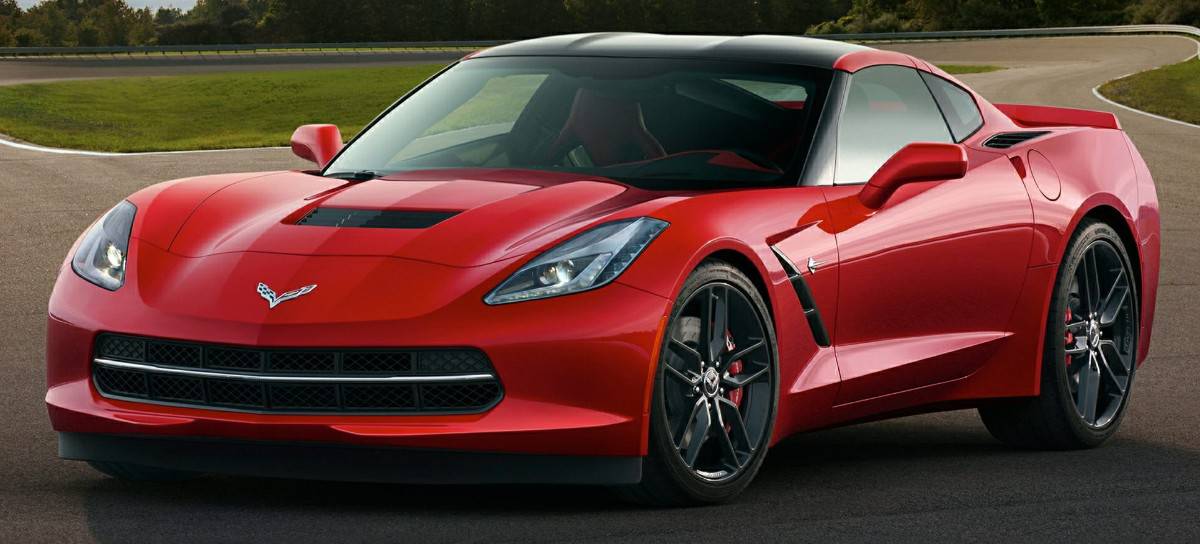 Because the layout of the engine and drivetrain significantly influences the overall handling of a vehicle, it's important that the sports car's built right for the best performance. A front-engine, rear-wheel-drive layout, otherwise known as the FR, is the most common in sports cars. Examples of this variety include the Mazda MX-5, Chevrolet Corvette, and Caterham 7. To be more specific, many of the vehicles feature a front-mid-engine, rear-wheel-drive layout, otherwise known as FMR. This places the center of engine mass directly between the firewall and front axle.
Because the layout of the engine and drivetrain significantly influences the overall handling of a vehicle, it's important that the sports car's built right for the best performance. A front-engine, rear-wheel-drive layout, otherwise known as the FR, is the most common in sports cars. Examples of this variety include the Mazda MX-5, Chevrolet Corvette, and Caterham 7. To be more specific, many of the vehicles feature a front-mid-engine, rear-wheel-drive layout, otherwise known as FMR. This places the center of engine mass directly between the firewall and front axle.
There are times when other layouts are used. Sometimes, they help with weight distribution or improved handling. Sports cars are some of the only vehicles that contain a rear mid-engine and rear-wheel-drive design, otherwise known as RMR. In this layout, the motor is center-mounted closely behind the driver, directly in the chassis. This powers the vehicle's rear wheels and is commonly used by high-performance cars such as Lamborghini and Ferrari.
As far as the rear-engine, rear-wheel-drive design (RR), Porsche is one of the few automakers that still uses this. This layout allows the motor's weight to distribute among the wheels which provides better traction, but it also makes it more prone to oversteer. Over the years, they've continued to refine the design and also added some electronic stability control to make up for the shortcomings.
The FF (front-engine, front-wheel) layout isn't just used in sports cars, but also common in hatchbacks and most modern cars. It avoids adding extra weight and avoids increased transmission power loss. The only downside is the tendency to understeer which cases some enthusiasts to avoid it and aim for an FR design instead.
 As far as four-wheel-drive, few cars used it before the 1980s. Now several manufacturers desire to use it for improvement with traction.
As far as four-wheel-drive, few cars used it before the 1980s. Now several manufacturers desire to use it for improvement with traction.
Layout of Seats
Originally, sports cars were two-passenger roadsters. The first sports cars came from high-powered tourers and the earliest sporting regulations regularly required a four-seat setup. Two-seats didn't become commonplace until the mid-1920s. Some modern sports cars contain smaller back seats now, but most of the time they only hold some suitcases or children. These layouts are referred to as a 2+2 setup because they have two full seats and an additional two occasional seats.
In recent times, automakers attempt to reach other consumers by adding to the passenger space. The Lamborghini Miura tried to place a driver's seat near the center and two passengers to either side but slightly behind. This wasn't practical and didn't last long, although McLaren did use the layout for their F1.
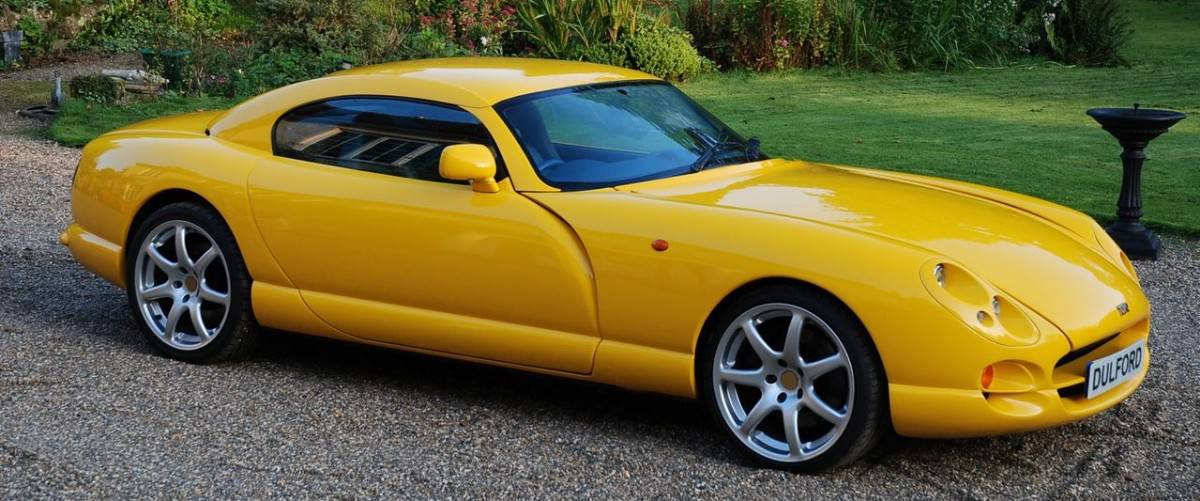 In Britain, the TVR attempted a unique approach inside the Cerbera. The passenger side dashboard swept further toward the front of the car so the passenger could sit further front than the driver. This allowed for a spacious back seat so the car held three adults and one child. Some people call this a 3+1 layout.
In Britain, the TVR attempted a unique approach inside the Cerbera. The passenger side dashboard swept further toward the front of the car so the passenger could sit further front than the driver. This allowed for a spacious back seat so the car held three adults and one child. Some people call this a 3+1 layout.
The Beginnings
There's no clear-cut definition of a sports car, nor is there a true beginning to when they first made an appearance on the scene. We do know that sports cars go faster, handle better, and look more appealing than a typical car model. Early race cars might have been the first sports cars, especially the ones that drove during the early 20th-century events.
Some people think that they started with the 1903 Mercedes that featured 60 horsepower. At the time, they called it a fast touring vehicle. It also featured a four-speed transmission, pressed-steel chassis, pushrod overhead inlet valves, honeycomb radiator, and low-tension magneto ignition.
Unfortunately, there was a 20 mph speed limit placed on all of England's public roads, so manufacturers didn't have a lot of incentive to produce anything fast. That was until the Brooklands track opened in 1907.
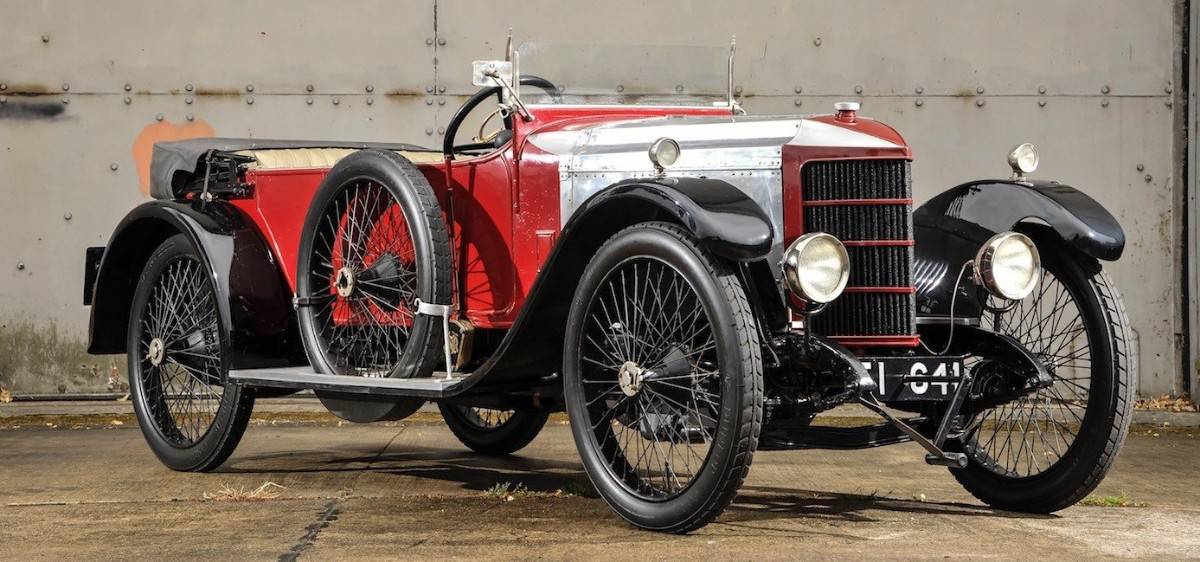 The term sports car wouldn't be used officially until after the end of World War I. Prior to that, they considered the 1910 Prince Henry Vauxhall to be the first. It featured a 3.0-liter engine that produced 20 horsepower. Another one to be classified was the Austro-Daimler created by Porsche.
The term sports car wouldn't be used officially until after the end of World War I. Prior to that, they considered the 1910 Prince Henry Vauxhall to be the first. It featured a 3.0-liter engine that produced 20 horsepower. Another one to be classified was the Austro-Daimler created by Porsche.
During the first part of the 20th-century, Porsche was the leader in the sports car industry. Another early car was the Hispano-Suiza's Alfonso XIII. It was produced from 1911 through 1914 and designed by Mark Birkigt, a Swiss engineer. Only about 500 of them were created at the time, which was impressive. Another popular car among the races from 1906 until 1910 was the Bugatti Type 13.
Other cars to join the ranks at the time included the French DFP, Delage, and Rolls-Royce Silver Ghost.
After World War I
Once the Europeans went back to automobile manufacturing, there were many advances made in the industry. Higher-speed and more modern engines entered the scene. In addition, leaded fuel was allowed which resulted in higher compression ratios and more engine power.
The demand for these high-performance cars grew strongly so automakers began transforming from touring vehicles into sports cars. As the price to create racing cars increased, the automobile industry put more focus on the growing performance market instead.
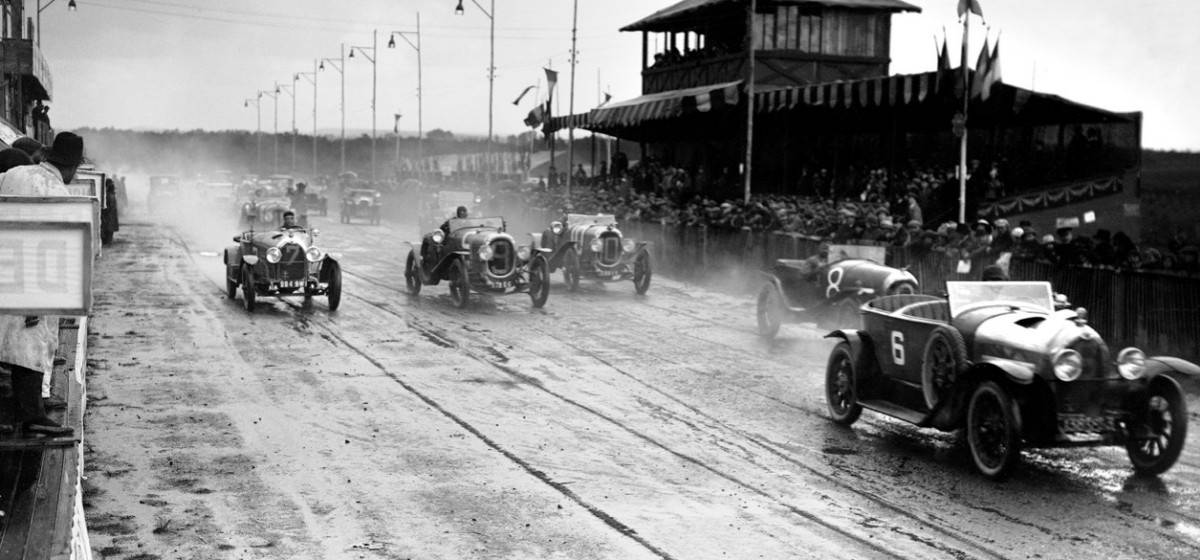 The first 24 Hour Race occurred in 1923 on the Circuit de la Sarthé. They required the use of four-seat touring cars because the two-seat option was still evolving. Because four-passengers were the most profitable cars, two-passenger varieties were produced by specialists like Aston-Martin, Frazer-Nash, and Alvis.
The first 24 Hour Race occurred in 1923 on the Circuit de la Sarthé. They required the use of four-seat touring cars because the two-seat option was still evolving. Because four-passengers were the most profitable cars, two-passenger varieties were produced by specialists like Aston-Martin, Frazer-Nash, and Alvis.
Innovation through Tough Times
Sports car automakers saw a decline in interest from consumers. While waiting, there were some technological advances, just not with the sports cars. Instead, companies invested in their family saloons that had independent front suspension systems. They provided more comfort and road-holding ability than the performance vehicles and started being imported to Europe by the masses.
That didn't stop Morris Garages from continuing the pursuit. They were the most well-known sports car firm at the time and they produced more performance vehicles than anyone else. The MG "Midget" came out of the M-Type from the late-1920s. Then, the T-Type came out around 1936 and featured a 1292 cc pushrod overhead-valve engine that produced less noise while increasing performance. The car also came complete with hydraulic brakes and an upgraded chassis. The company also released the K3 competition version of the K-Type. With a supercharger, it was capable of attaining 110 mph and saw great success in the 24 Hours of Le Mans, Tourist Trophy, and Mille Miglia. Unfortunately, MG's competition endeavor closed down in 1935 because of business concerns.
Bugatti also produced some amazing vehicles during this time. The Grand Routière-styled T57 Atlantics has become one of the most valuable in the entire world. Bugatti also manufactured a T57 featuring an eight-cylinder engine. It came as a four-door family vehicle, sporty roadsters, or a sleek two-door coupe. This car also did well in many races plus won the 1937 Le Mans. Jean Bugatti was forbidden to race by his father, but he road tested the T57 anyway for the 1939 Le Mans. The car went more than 124 mph, but Jean died in a crash. After that, Ettore Bugatti sold his company in 1940 because of force imposed on him by the Nazi regime. Seven years later, he passed away.
After the War
There was massive interest in performance vehicles following the war. That's what led to some of the most diverse and important technological advancements during this time. New designs, streamlined manufacturing techniques, and better handling properties were all achieved during this time.
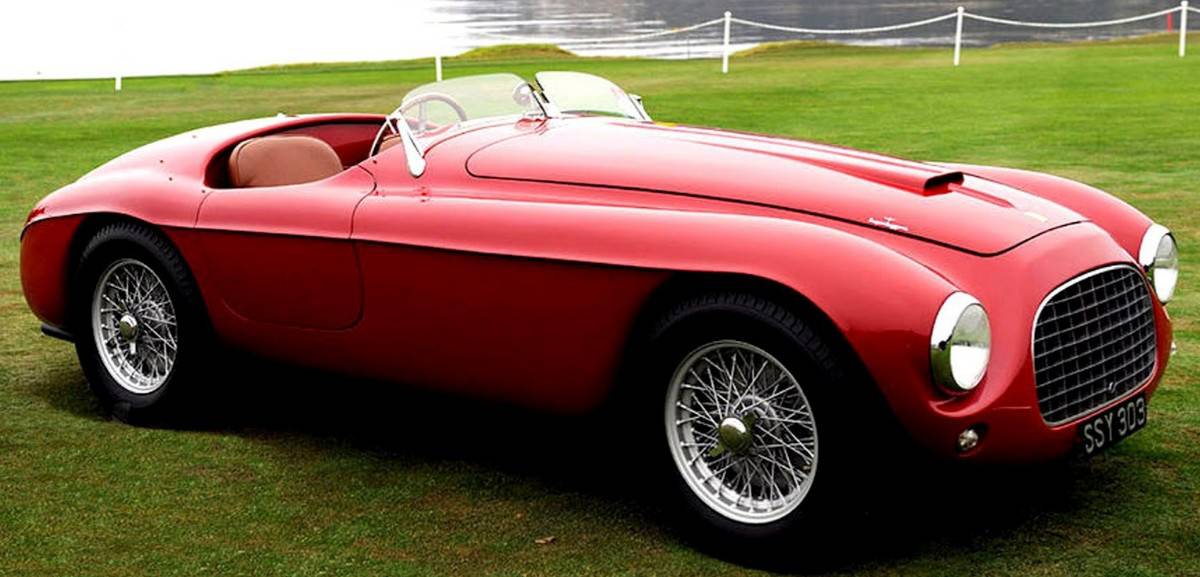 Enzo Ferrari began manufacturing limited numbers of elegant and high-performing vehicles. The 166 S from 1948 is considered to be one of the most prominent sports cars ever made. In fact, in 2017, there was a 166MM Barchetta from 1950 up for auction at over $10 million.
Enzo Ferrari began manufacturing limited numbers of elegant and high-performing vehicles. The 166 S from 1948 is considered to be one of the most prominent sports cars ever made. In fact, in 2017, there was a 166MM Barchetta from 1950 up for auction at over $10 million.
Even though Germany saw a lot of devastation from the war, it didn't stop automakers. The Porsche 356 was released and featured an 1100-cc version of a Volkswagen engine. Each of the models, other than the Spyder and Carerra utilized an opposed four-cylinder engine which sat behind the rear axle. It also had a four-speed transmission that drove all four wheels and a laminated torsion bar suspension.
Growth in Sports Car Sales
In the 1960s, there was a launch of new sports cars because the market continued to expand. The Jaguar E-Type debuted in 1961 and remained in production for an astounding 14 years. The Mercedes-Benz SL also entered its second generation in 1963. Then, in 1964, Porsche replaced their 356 with the iconic 911 model. Some less expensive cars arrived include the Fiat Dino, Triumph Spitfire, Sunbeam Tiger, and Alfa Romeo Spider.
Fiat released their X1/9 in 1972. It was a two-passenger mid-engine sports car, but it only lasted through the 1980s. American automakers saw success with their Ford Mustang and Chevrolet Corvette during this period.
Another popular company, Lotus, saw strong sales with vehicles such as Eclat, Elan, and Esprit.
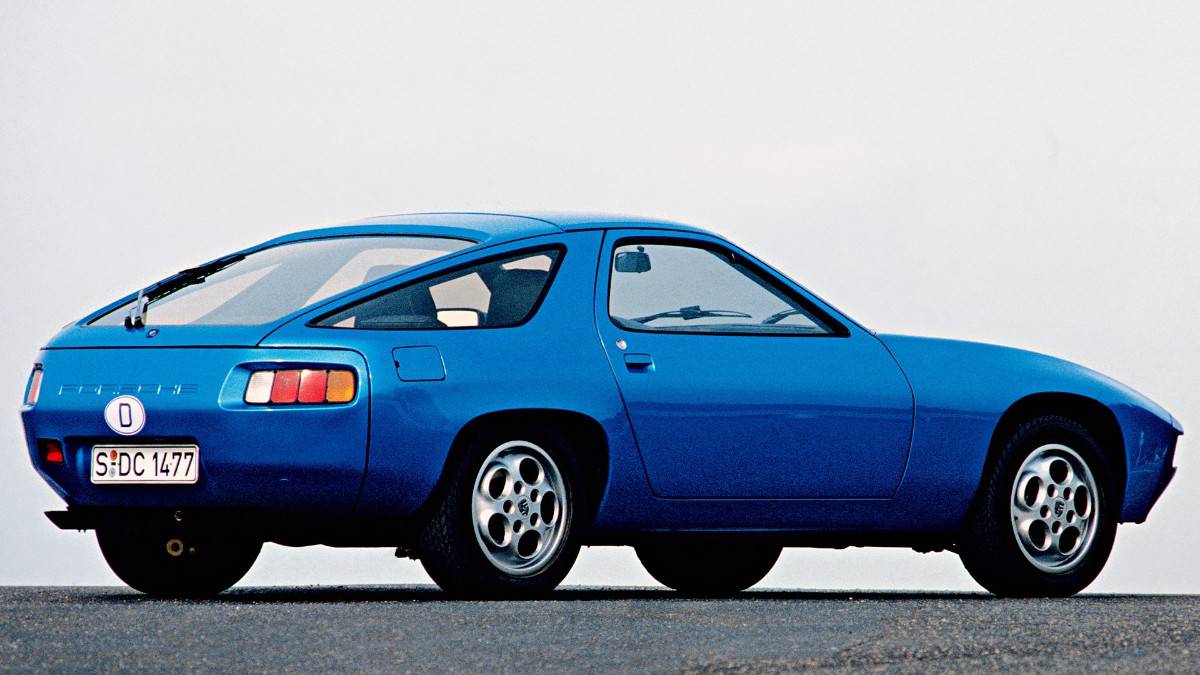 During the 1970s, Porsche expanded its lineup with the 924. This entry-level, four-cylinder coupe debuted in 1976 with the 928 arriving a year after. The purpose behind the 928 was to replace the company's 911, but because of the popularity, that never happened.
During the 1970s, Porsche expanded its lineup with the 924. This entry-level, four-cylinder coupe debuted in 1976 with the 928 arriving a year after. The purpose behind the 928 was to replace the company's 911, but because of the popularity, that never happened.
Explosion of Successful Models
During the 1980s and 1990s, many automakers continued achieving success. Audi released a front-wheel and four-wheel drive variety of automobile into the market that were both successful. BMW also made its comeback with the Z1 roadster. Honda released their Prelude coupe and then moved into the supercar arena with their NSX. Jaguar replaced their E-Type with the XJS.
Lotus released the Excel, but sales weren't as high as they would have liked. In the 1990s, they also produced the Elise. Mazda patented a rotary engine during these years as well. This led to the Mazda RX-7, which was a high-performing sports car that came as a convertible or coupe. They saw more success, however, with their Miata (MX-5) design.
 Mitsubishi hit the market with their popular Eclipse model. It was only sold in the United States and Japan. Nissan also released their high-performance line in the 1980s. The original 300ZX arrived in 1983 and lasted through 1996. Porsche, on the other hand, continued developing their 911.
Mitsubishi hit the market with their popular Eclipse model. It was only sold in the United States and Japan. Nissan also released their high-performance line in the 1980s. The original 300ZX arrived in 1983 and lasted through 1996. Porsche, on the other hand, continued developing their 911.
Toyota saw success with the Celica coupe, so they also decided to manufacture a sports car. Their Celica Supra became their higher performing model in 1986.
Modern Day
Audi released the TT which became an immense success in the market. BMW also debuted the Z3 which became a top seller. The Z4, its successor, saw production for 14 years and sold well. Honda stopped producing their Prelude model in 2000. It had achieved more than 20 years on the market with five generations.
Lotus also released a newer Elise which stayed in production for a decade before an updated version was produced. GM also manufactured the Vauxhall VX220 which was a two-passenger roadster designed from the Elise chassis.
Types of Sports Cars
Performance cars might include:
- Grand tourers
- Coupes
- Hot hatches
- Sport compacts
- Muscle cars
- Supercars
- Sports sedans
The classifications of these vehicles often overlap one another. Some luxury car manufacturers only focus on the production of performance vehicles. Some of these companies include Ferrari, Aston Martin, Porsche, and Maserati.
Other companies choose to develop a high-performing version of one of their automobiles. This is the case with Mercedes-Benz and BMW. Other vehicles aren't necessarily sports cars until aftermarket parts are integrated to increase performance.
Supercars
The supercar is a high-performing luxury sports car. This is a marketing term to designate an expensive or unusual vehicle. This term predates muscle cars so it was often used to describe the V8 cars of the 1960s and 1970s. It later referred to a grand touring vehicle or GT. Now, it simply means that the car is very fast, sleek, has a sporty handling, and catches the eye. The price is also off the charts in comparison to other vehicles.
 A hypercar is more advanced than the supercar. Some examples include the Ferrari La Ferrari, Porsche 918 Spyder, and McLaren P1.
A hypercar is more advanced than the supercar. Some examples include the Ferrari La Ferrari, Porsche 918 Spyder, and McLaren P1.
Fun Facts about Sports Cars
1 – Because of the massive amounts of heat generated by the Bugatti Veyron, there were 12 radiators placed around the body.
2 – The first version of the Dodge Viper featured no anti-lock brakes, exterior door handles, or even windows.
3 – The Audi R8 and Lamborghini Gallardo are related. They share the same interior layout and chassis, but feature several cosmetic differences.
4 – Not all sports cars are gas hogs. Some recent models are quite fuel-efficient. The Porsche 911 Carrera S achieved 400 horsepower while still managing to get 27 mph highway. There are also newer sports hybrid vehicles such as the BMW i8 which gets 95 mpg.
5 – Not all sports cars are expensive either. Some of the affordable options through the years included the Mazda Miata, Ford Mustang, Dodge Challenger, and Chevrolet Camaro.
Frequently Asked Questions
How much is insurance for a sports car? You will usually pay more for insurance on a sports car. Statistics show that sports cars are often driven at higher speeds by young and risky drivers. This makes them more prone to accidents. They are also commonly the subject of theft, plus they are targeted by the police more often than family cars.
Where can I rent a sports car? You'll find sports car rentals from all the major names in the industry such as Enterprise, Hertz, and Alamo. They often offer a Dodge Challenger, Mercedes SLS Roadster, Maserati Gran Cabrio, or similar models for your rental. Shop around to get the best deal for a vacation or business trip and you'll be able to tour in style.
Why are some sports cars rear-wheel drive? An RWD vehicle takes a lot of abuse without the need for repairs, especially if the design featured a solid axle. Running over a curb with a solid axle means you're less likely to bust something. That's why you see most cop cars are rear-wheel drive. Another advantage is in the balance. Because they have a better balance, the handling is also better. The downside to these is that they don't perform well in bad weather, but with some modern technologies like traction control, a lot of the issues are alleviated.
How can I improve a car's performance? It depends how much money you want to spend. Consider installing a cold-air intake, adjusting your exhaust, add a turbocharger or supercharger, modify the ECM, or reduce the weight.
14 of the Best American Sports Cars Autowiseautowise American-sports-cars
Source: https://autowise.com/sports-cars/